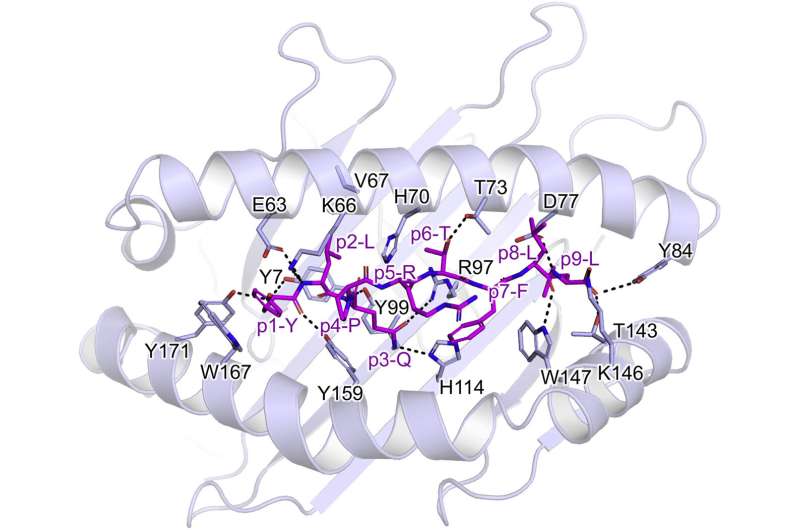
The immune system is vitally important for resolving COVID-19 when individuals are infected with the SARS-CoV-2 virus. Moreover, the vaccines that are being administered to millions of people across the globe are designed to 'pre-warn and arm' the immune system so that if infected with SARS-CoV-2, individuals are significantly less likely to develop severe disease or die. Here, two crucial arms of the immune system, namely B cells and T cells, play a central role.
While we have a molecular understanding of how antibodies, which are produced by B cells, can bind and neutralize the spike protein from SARS-CoV-2, up until now researchers did not know how T cell receptors (TCRs), which are found on T cells, recognize antigens that arise from the spike protein.
"T cells play an important role in immunity against both SARS-CoV-2 vaccination and severe acute respiratory infection. Although T cells in COVID-19 have been studied previously, the molecular basis underpinning TCR recognition of SARS-CoV-2 remained unknown. It has been a pleasure working with the Monash University team to conduct this extremely important work to understand how T cells recognize an antigen from SARS-CoV-2," said University of Melbourne Professor Katherine Kedzierska, a laboratory head at the Peter Doherty Institute for Infection and Immunity.
In a world first finding, co-led by Monash University's Dr. Priyanka Chaurasia, Dr. Jan Petersen and Professor Jamie Rossjohn, and Professor Kedzierska, the team analyzed the TCR recognition of a spike protein fragment when presented by an immune molecule, termed Human Leukocyte Antigen A2 (HLA-A2). This work, which utilized the Australian Synchrotron, was published in the Journal of Biological Chemistry.
"This is a piece of a larger puzzle. While SARS-CoV-2 continues to evolve, we have to build our understanding of how effective immune responses work," said Dr. Jan Petersen.
The team provided important molecular insight into understanding how T cells of the human immune system respond to SARS-CoV-2. Different individuals mount differing immune responses to SARS-CoV-2, and this work provided fundamental insight into such an immune response.
Explore further
Citation: Uncovering how T-cells recognise the SARS-COV-2 virus spike protein (2021, September 20) retrieved 20 September 2021 from https://phys.org/news/2021-09-uncovering-t-cells-recognise-sars-cov-virus.html
This document is subject to copyright. Apart from any fair dealing for the purpose of private study or research, no part may be reproduced without the written permission. The content is provided for information purposes only.
https://news.google.com/__i/rss/rd/articles/CBMiTmh0dHBzOi8vcGh5cy5vcmcvbmV3cy8yMDIxLTA5LXVuY292ZXJpbmctdC1jZWxscy1yZWNvZ25pc2Utc2Fycy1jb3YtdmlydXMuaHRtbNIBTWh0dHBzOi8vcGh5cy5vcmcvbmV3cy8yMDIxLTA5LXVuY292ZXJpbmctdC1jZWxscy1yZWNvZ25pc2Utc2Fycy1jb3YtdmlydXMuYW1w?oc=5
2021-09-20 12:10:31Z
52781892449640
Bagikan Berita Ini














0 Response to "Uncovering how T-cells recognise the SARS-COV-2 virus spike protein - Phys.org"
Post a Comment